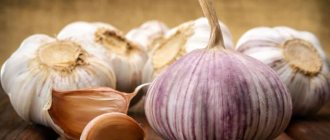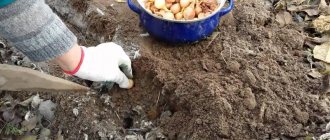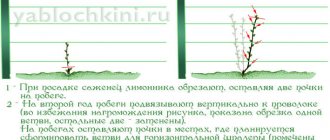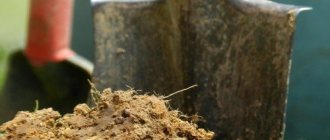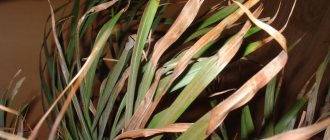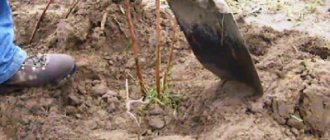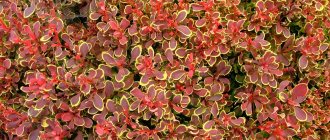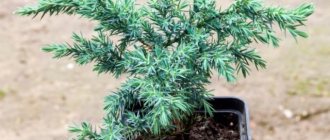What can replace classic fertilizers from the store? Supporters of organic farming are well aware of such an alternative as green manure. When, how and what kind of green manure to sow in the fall – we’ll tell you in today’s material.
When soil fertility decreases, it affects not only the quantity, but also the quality of harvested vegetables, fruits and berries. Some of them become smaller and tasteless.
There can be many reasons for a decrease in soil fertility, but the most common are the following:
- You constantly plant the same crop on the same piece of land. A good example in many areas are potato beds, which rarely change their location. Meanwhile, different plants consume nutrients from different layers of soil. Therefore, when alternating crops, the soil has time to partially recover. But if you do not observe crop rotation, then you simply deplete the soil on your plot. Why should one hope for a good harvest? In addition, when plants of the same family grow in one place for several years, diseases and larvae of pests accumulate in the ground, affecting these crops.
- You constantly burn plant residues directly in the beds and think that ash is good for the soil. Yes, ash is an excellent organic fertilizer and pest control agent. But do not forget that by burning weeds on bare soil, you destroy its structure and destroy microflora beneficial to plants.
- Water or wind erosion. At first glance, it is not you who are to blame, but, on the other hand, if you had sown green manure in place of the harvest, the soil would have been reliably protected from these adversities.
The conclusion is quite clear: the reason for the depletion of the soil is the insufficient care of the owner of the site. But don’t be upset, because everything can be fixed, and now we will move from sweeping accusations to the simplest way to solve the problem - planting green manure in the fall.
Calendula enriches the soil with useful organic matter and also provides additional protection against wireworms and nematodes. This plant is great for use as an autumn green manure
What are green manures?
These are fast-growing herbaceous plants that do not bear fruit. Their main purpose is to fertilize the earth.
The common property of all green manure is to quickly grow green mass, which, when mowed, quickly rots and well increases the yield for one season.
There are many types of green manure, and their planting has its own nuances and subtleties. There are some differences when planting green manure in autumn and spring. It is necessary to cut off and dig up the grown spring green manures,
The value of green manure
If the soil is not fertilized, it loses its structure, becomes poor, too dense and compacted. The humus layer becomes thin, the amount of useful substances, microorganisms, minerals, and so on decreases.
Air flows poorly into such soil, the roots do not receive proper nutrition, the plants become smaller, the stems become thinner, and the plants become sick.
- Green manure saturates the soil with nutrients;
- increase the humus layer, restore soil organic matter;
- reduce the number of pests and prevent pathogens from developing;
- slow down the development of weeds;
- loosen the soil and help maintain a normal level of moisture in it;
- retain snow in winter and prevent the soil from weathering;
- protect the soil from spring frosts.
Although green manure serves as a good fertilizer and increases productivity, one should not think that they can completely replace other types of fertilizers.
Principles of no-till farming
The beauty of using agricultural green manure plants is not only that the gardener can reduce the cost of purchasing ready-made fertilizers at garden centers. Also, the use of green manure techniques allows you to avoid the annual tedious and routine digging of the garden plot. Gardeners who have voted in favor of no-till farming already know that its main advantage is protecting the soil from erosion, preventing the leaching and blowing of nutrients from the soil, as well as the ability to avoid the use of heavy agricultural machinery for digging up land.
Soil is a fragile and complex ecosystem, in the depths of which a wide variety of life forms are present in abundance. In fact, the seemingly lifeless layers of soil represent a whole world in which bacteria, fungi, insects and representatives of other species live. All these “residents” are present in the soil for a reason. They help ensure the cycle of nutrients in the soil, improve soil structure by creating air and water channels, and also participate in the process of protecting soils from pathogens and pests.
Habitual digging or plowing of the earth leads to the fact that the ecosystem that has been established over many months collapses in an instant.
Therefore, when asked whether it is necessary to dig up green manure, agronomists specializing in organic farming give a negative answer. However, when choosing no-till farming, summer residents face a new dilemma. They don’t know what to do with the grown green manure in the fall and spring - mow it down and bury it in the ground or throw it on the surface to protect the top layer. To resolve this dilemma, it is enough to study the principles of soil mulching. They consist in the fact that the cut vegetative mass of green manure is simply left on the surface of the soil for further rotting. During the decomposition process, “green fertilizers” will independently improve the organic composition of the soil, retain moisture in it and optimally structure it.
If desired, the summer resident can use a green manure chopper. It is designed for uniform and accurate cutting of the stems of ground cover crops. The advantages of using this device can be presented as follows:
- the ability to cultivate large areas of land in a short period of time;
- high level of automation of the chopper, requiring minimal action on the part of the farmer;
- large area of crop capture.
Among the disadvantages of a mechanized device are the following points:
- high price;
- the need for current and major repairs;
- the presence of strict requirements for the slope of the soil and the presence of unevenness on the site.
As you can see, it is advisable to use a chopper only on an industrial scale, since the maintenance and maintenance of such equipment will clearly not be affordable for the average summer resident who grows tomatoes and cucumbers on several hundred square meters. Therefore, amateur farmers can find out how to trim green manure manually, or purchase a small cultivator or flat cutter for these purposes. To summarize the information in this section, we can say that refusing to dig allows you to preserve the health of the soil and gives the farmer the opportunity to refuse to play destructively with the fragile ecosystem of the planet. In addition, well-chosen methods of crushing green manure in the country for their use as mulch in the future allow farmers to save money on purchasing expensive chemical fertilizers, which, by the way, also negatively affect the environment.
Adviсe
Thanks to green manure and its proper use, in a few years you can significantly improve the soil structure on your site. There are several simple rules:
- Use green manure that is familiar to your region of residence;
- they must be mowed in time before the stems become too dense;
- mow green manure no earlier than 2-3 weeks before planting the main crop;
- use green manure that is different from the crop planned for planting;
- take care of the roots of green manure when mowing - use a flat cutter for this;
- Winter green manure does not need to be mowed in the fall.
Green manure can bring tangible benefits.
Green manures, with their roots, transfer nutrients from the depths of the soil to its surface and, through root juices, transform them into a well-digestible state. Compounds of phosphorus, silicon and potassium that are previously insoluble and therefore not at all assimilated by plants.
Nitrogen-fixing bacteria that multiply on the roots of legume green manures enrich the soil with nitrogen compounds. And also capable of:
- improve the structure of the soil, make it looser and more moisture-absorbing;
- enrich the soil with substances such as phosphorus, potassium, nitrogen, calcium;
- strengthen the soil surface and shade it, which helps prevent overheating and erosion;
- slow down the growth of weeds due to strong roots that draw out nutrients;
- prevent pests from targeting the main crop;
- attract beneficial insects during flowering.
One of the main signs of depleted, unhealthy soil is the crust that appears on the surface after moisture. You can use chemical fertilizers to improve the situation.
But these additives have a bad effect on the natural inhabitants of the earth: worms and various microorganisms. Therefore, using organics is much more correct.
In addition to the above, green manure is also significantly ahead of manure in terms of the amount of useful elements, and can also reduce the acidity of the soil. Which will also have a beneficial effect on the cultivation of most garden crops. This is especially true for clay soils.
You can check the acidity of the soil using litmus paper. Take a handful of soil, put it in a glass of water, stir well and leave for at least a day. Now all that remains is to carefully pour the water into a clean bowl and dip the litmus into it. The paper turned red - make no mistake, the plant problems arose from increased acidity. A small change, or none at all - everything is fine with the site, the soil is neutral.
Methods for soil deoxidation using organic calcium fertilizers.
Types of green manure
Each garden plant has its own best green manure predecessor. Some can only harm a given plant and cause rapid development in another.
There are spring green manures - those that are planted in the spring, and winter ones, which are best planted in the fall and before winter. Their important feature is the ability to grow quickly and gain green mass.
The following families of green manure are distinguished:
- Legumes - sweet clover, peas, vetch, clover. They draw nitrogen from the atmosphere and enrich the soil with it, help plants absorb phosphates, and repel soil pests.
- Cruciferous vegetables - mustard, rapeseed. The root system of these plants loosens the soil well and enriches the soil with sulfur and phosphorus.
- Cereals - wheat, oats, rye. They improve the structure of the soil and enrich it with potassium. Well suppresses the growth and development of weeds.
- Borageaceae - phacelia. Improves soil structure, grows quickly, neutralizes the acidic environment in the soil, suppresses the growth of weeds.
Sowing dates for green manure
Green manure is sown in early autumn and even in August, immediately after harvesting vegetables, so that the beds are not empty. The deadline for winter species is no later than mid-September and then in a warm and long autumn. Before the cold weather, they must form strong bushes 15–20 cm high, otherwise they will not survive the winter.
If in your region already in September - early October the ground is frozen, then the idea of green manure may turn out to be empty: they either will not sprout or will not have time to grow to the stage when they are able to bring benefits (loosening the soil with powerful roots, suppressing weeds and diseases) . In such a climate, it is better to sow green manure in spring or summer, after onions, garlic and other early crops.
Before winter, like carrots or garlic, green manure is not sown, since it sprouts quickly at minimal positive temperatures. Weak shoots will freeze in winter. And even weather forecasters cannot predict the day when constant cold will set in, without thaws, until spring.
Popular green manures
Among winter green manures, five are the most popular among gardeners.
Rye
No wonder they called it Mother Rye. It loosens the soil, parasitic plants do not grow in it, and after it there are practically no nematodes left in the soil. Rye disinfects the soil and removes rot from it. After rye, the soil becomes more nutritious. It also prevents the ground from freezing in winter.
It is planted in front of melon and nightshade crops and root crops.
Oats
Has the ability to improve clay soils. It makes them lighter and disinfects them from root rot. Works especially well in combination with vetch.
It is best planted as a predecessor to cucumbers and zucchini.
Barley
Winter and spring barley is planted as green manure in the fall. Like other cereal green manures, it copes well with putrefactive processes in the soil. The ears have a highly branched root system that blocks the development of weed seeds. It disinfects and improves soil and grows well in depleted soil. But it cannot be used on the same area for several years in a row.
This is an excellent predecessor to cucumbers, tomatoes, eggplants and potatoes.
Vika
This is a leguminous plant, very beautiful when in flower. Its fruits are so small that it is simply impractical to use it as a fruit crop. Its stems are strongly intertwined, creating deep shade underneath and preventing weeds from developing. It fertilizes the soil well, enriches it with nitrogen, drains it, fills it with air, and improves the health of the entire ecosystem. The soil under vetch plantings is reliably protected from erosion and washout.
It is good to use in front of any plants except legumes. It works especially well when paired with oats.
Rape
It has a detrimental effect on earthen pests, has an excellent weed control, and prevents weed seeds from developing. Destroys pathogens in the area.
It should be sown as a winter green manure back in August; nightshade species grow especially well after it.
Mustard
An inexpensive and effective way to structure the soil. It enriches the soil with humus, grows well even on heavy soils, and turns them into light and porous ones. Protects the garden from weeds and harmful insects. Mustard can bring hard-to-reach substances from the soil into an easily digestible state. Suitable as a predecessor for nightshades and melons.
The best autumn green manures
Oats. In most Russian gardens, the soil is clayey, dense, and does not dry out well, which leads to root rot. Oats have a strong root that penetrates the clay, creating a porous structure. The soil begins to “breathe” and ventilate, which has a detrimental effect on putrefactive fungi. This green manure is a good precursor for cucumbers, zucchini and pumpkins.
Oats develop powerful roots that can loosen the densest soils
Mustard is a fast-growing, cold-resistant green manure with phytoncidal properties. It fights fungal diseases (fusarium, late blight, rot), repels wireworms, so it is ideal for sowing in a potato field. And potatoes are the main and favorite crop for many Russians. Mustard cannot be sown before or after cabbage crops.
A well-known representative of cabbage plants, mustard is an excellent phytosanitary
Phacelia does not belong to any family grown in the garden, so it is an excellent predecessor for any vegetable. And this plays into our hands: we don’t have to think about where to sow it. Green manure actively grows bushes, its leaves are fluffy and lacy, they rot very quickly after cutting, enriching the soil with macro- and microelements.
Universal green manure - phacelia: wherever you plant it, there is benefit everywhere
Winter vetch belongs to the legume family. Plants sown in the fall before the cold weather have time to grow shoots that can survive the winter. In the spring, green manure will continue to accumulate nitrogen at the roots, thereby preparing the soil for planting any seedlings.
Winter vetch will come out from under the snow in early spring and will enrich the soil with nitrogen necessary for the growth of young vegetable crops.
Winter rye, like all green manures, loosens the soil, displaces weeds, etc. But its main merit is its destructive effect on fungi, diseases and nematodes. These microscopic parasites accumulate in the soil and severely damage potatoes, as well as perennial flowers. From the very early spring, winter rye will continue what it began in the fall - to cleanse the land. It will be the best predecessor for potatoes, pumpkins, tomatoes, zucchini, cucumbers, tulips, daffodils, phlox, bergenia, etc.
Winter rye will rid the area of a dangerous pest - nematodes
Landing rules
You need to decide when to sow green manure before winter in mid-July. After all, some of them are sown in August.
The time of sowing depends on the region - in the southern regions it can be postponed to a later period - to September, or even the first half of October. In the northern regions, night frosts sometimes even occur at the end of August.
Already at this time, the first steps are taken to plan plantings for the next year - this determines which green manure crops to sow and where to sow now. Plants planted in August should have time to grow 20-30 cm before the onset of cold weather, then they are cut off. But whether it is necessary to dig up the ground after this is a question at your discretion. You don’t have to do this; it’s better to leave them lying on the ground. The grass mowed in this way will cover the ground and protect it from frost. And in the spring it will also protect her from unexpected frosts at the beginning of seasonal work.
Winter green manures begin to be planted immediately after harvest. You can start as early as September, and if the summer is cold, then in August. If the August plantings germinate, the green cover should be cut off and left on the surface, and new green manure should be sown - they will become winter crops. Cut greens will become additional fertilizer when they rot.
Should I plant them in the fall?
Autumn sowing of green manure is often very useful.
- Saves time in the spring. There is no need to plant green manure at the hottest time and wait until it grows, then mow it and plant early vegetables in its place. It is already in the ground and is already sprouting.
- Moisten the soil. Green manure retains snow and moisture longer, and the ground has time to become saturated with it.
- Stay in the soil longer. Autumn planting of green manure extends the time they remain in the soil until almost mid-spring. Their root system loosens it, releases additional minerals, and saturates it with oxygen. All this will then be necessary for growing later crops.
- Protect from sun and frost. Cut green manure remains on the surface of the ground, covering it and serving as a kind of blanket for it. You can dig up the area as soon as stable heat sets in, and start sowing 2-3 weeks after digging.
How to sow
There are several basic rules.
- The area chosen for green manure must be properly cleared of the remnants of the harvested crop. Particular care must be taken to remove diseased and damaged remains of tops, weeds and remnants of previous plantings.
- They are sown in areas where crops are to be grown in the future.
- Before planting green manure, potassium-phosphorus fertilizers are applied to heavily depleted soil.
- Dried soil must be properly moistened; then you can sow in 2-3 days. When moistening, the soil must be dug to a depth of 5-10 cm, loosened well and then you can water it.
- No furrows are made for winter green manure. The seeds are evenly distributed over the prepared area, but not covered with soil, but covered with a rake and covered with a small layer of compost. If you make furrows, they should be shallow - 2-3 cm. You should sow very densely; in this case, the plants are not expected to produce a harvest.
With the onset of spring, green manure begins to grow rapidly. When they grow to a height of 20-25 cm, they are cut off and left on the surface of the earth. This creates a layer of mulch, under which the remaining roots quickly rot. Before planting the main crop, the soil with rotted green manure will need to be dug up.
Plants that sprouted in the fall are not touched; they are left to stand until spring. Winter species will remain green and will withstand frost well.
The main crop is sown a month after mowing the green manure.
Is it necessary to dig up green manure in the fall? This is completely optional. Grown green manure plants create dense protection on the surface of the earth, and with the onset of cold weather their growth completely stops. They will begin to grow again in the spring. That's when they will need to be mowed down.
How to sow green manure in the fall
In order to prepare the soil for sowing green manure, the first step is to get rid of weeds, which can later get lost among the young plants and clog the area with seeds. If necessary, the ground can be dug to a depth of 20-25 cm, but only if your soil needs it. The seeds are buried on average 2-4 cm; before this, it is recommended to water the dry soil.
The thicker the better - the basic principle that should be followed when sowing green manure
Green manure is mowed when it reaches a height of 20-25 cm, always before the seeds appear, otherwise these plants will turn from helpers into weeds. The green mass is embedded in the soil; as it decomposes, it enriches the soil with useful substances.
Sometimes green manure planted before winter and mowed in spring is left on the soil surface for several weeks. This mulch promotes rapid decomposition of the roots of green manure plants.
Cereal green manure
Wheat, rye, oats, barley are excellent green manures, but winter and spring crops behave completely differently when planted. Their use as organic fertilizer must also be approached differently. Winter varieties are hardier, tolerate frost more easily and can remain green until spring. Spring crops die after the first frost.
Spring crops may not have time to rot in the ground over the winter. In this case, in the spring, their root system is trimmed with a flat cutter.
You can even distinguish them by their appearance:
- The spring variety is more rounded and has a bright golden color. If you chew it, it is soft and easily dissolves on the tongue. This is soft wheat.
- Winter - elongated, sharp, whitish in color, the grain seems almost glassy. It is not easy to chew, it is really very hard. Refers to durum wheat.
The same characteristics apply to other types of cereal green manures.
What to do with green manure after reaching a sufficient volume of vegetative mass?
Green manure is the secret weapon of every gardener who grows vegetables and fruits in accordance with the principles of organic farming. In order for the use of “green fertilizers” to give a good result, gardeners need to correctly select the type of green manure from among legumes, cereals or cruciferous plants. This must be done taking into account the type of soil, climate, time of year and the nature of the crops grown. It is also important to answer the question of how to properly use green manure - do you need to dig them up and embed them in the ground, or should you just cut off the greenery and choose no-till farming? Answers to these questions will be given below.
Green manure in a greenhouse
The soil in a greenhouse is different from open soil. It does not receive useful substances, it quickly becomes thinner and undergoes erosion. Greenhouse fertilizers for the greenhouse become a real salvation.
Green manure is what will help disinfect the soil, destroy pests, and saturate the soil with necessary microelements.
But there is a danger of oversaturation with certain substances and a lack of others - if you use the same green manure for several years in a row. They need to be changed in different areas. Crop rotation is necessary and important.
The rules for spring and autumn planting green manure in a greenhouse are also different.
How to plant
The sowing rules are almost the same as when working in open ground.
- In the selected area, you need to properly remove all the remains of previous plants, tops, visible roots, and so on.
- Level the soil and sprinkle it thickly with seeds.
- Lightly rake them in.
- Sprinkle a small layer of compost on top.
- Moisten the soil well.
In greenhouse conditions, seeds usually begin to germinate within 5-10 days, depending on the crop planted.
Birds that attack crops may pose some threat to green manure crops sown in autumn. It's easy to deal with - install a scarecrow and a feeder in the distance. This set of measures will protect your plantings.
What to plant in a greenhouse
Cereals - oats and rye
They cope well with fungal infections on the soil and prevent mold from forming. This is an excellent remedy against late blight.
After cutting, the plants are not buried, but left to rot on the surface. Then cover with a layer of compost.
After green manure cereals, cucumbers grow well in the garden bed.
Any varieties of mustard and rapeseed
This is an excellent sanitary plant that fights all types of rot and many other plant diseases in a greenhouse. And even mustard stems contain amazing essential oils that disinfect the air in a greenhouse and prevent pathogenic bacteria from developing. It is very good for any plants except cruciferous plants (which include cabbage), since it itself is a cruciferous plant.
This green manure grows very well together with nightshades, and tomatoes and potatoes are most often planted in the place where mustard grew. Peppers and eggplants will grow well.
At what time is it necessary to sow green manure?
It is recommended to sow the ground with green manure if there are no main plants on it. This period begins from the penultimate week of July and lasts until the beginning of August. You should not delay this matter and sow them in the fall, because they must gain the necessary biomass before the onset of cold weather.
Often, green manure is sown before planting the main crop - in the spring. They grow together for some time. It is better to sow winter fertilizers in the autumn, of course, if you want to leave them in the garden for the winter. Before you start sowing a plant, carefully study what time of year it is best to do it. Some plants are sown in spring, and some in autumn. There are no special criteria for planting the land with green manure; the main thing is to know which green fertilizers are planted before winter and which ones after.
Benefits of using green manure
I think everyone knows that it’s easy to increase acidity with lime. Compared to this method, green manure has a huge number of advantages for the soil:
- do not allow melt water to wash away useful substances;
- make it more loose, providing access to moisture and air;
- enriched with nitrogen necessary for the growth of vegetables;
- get rid of pests (nematodes, wireworms, bedbugs);
- protect from destruction;
- act as additional organic fertilizers;
- suppress the growth of weeds.
As you can see for yourself, planting green manure is much more profitable than liming. It remains to consider in detail what and how best to sow and get the maximum benefit.
Is it worth burying green manure?
As we said earlier, some gardeners prefer to bury green manure in the ground, while others leave it under the snow. In the first case, you get an advantage in the spring, because... your land will warm up faster.
But if you leave green manure as a shelter, you will not only be able to take a break from digging up the garden, but you will also get much more benefits. Initially, your soil will be so loose that any digging will be out of the question. At the same time, there is a high probability that during the winter the “covering” will simply rot, which means it will saturate the soil with useful substances.
Question to the expert
Is it true that green manure is more useful than store-bought fertilizers?
Definitely yes, because in addition to fertilizing the soil, they also bring a lot of benefits. In addition, green manure is a natural product, while most purchased fertilizers are pure chemicals.
Popular types
For Russia, the most common winter green fertilizers are:
- rye;
- oats;
- white mustard;
- rape;
- Vika;
- sweet clover;
- phacelia;
- lupine;
- buckwheat;
- rapeseed and others.
The choice must be made based on the climate of the region and the frost resistance of a particular type of crop.
Rye
The winter plant can withstand temperatures down to -25 C. Moreover, it is quite unpretentious. Its developed root system, which can reach 1.5 meters, perfectly loosens the soil, improves its oxygen supply and prevents erosion.
Crops for which rye will be an optimal fertilizer are tomatoes, pumpkins, potatoes and cucumbers. It can be used both in separate areas and adjacent to the main plant. With its thick tops, winter rye will help get rid of weeds such as sow thistle, wheatgrass, quinoa, buttercup, etc.
Oats
It is forbidden to sow in front of potatoes and cereals. Conversely, it is the best option before planting strawberries, raspberries, peppers, tomatoes, zucchini, peas, onions, garlic, radishes and beets.
One of the disadvantages of oats is that, unlike rye, it cannot withstand severe frosts and dries out. Therefore, the best period for sowing it is October.
It is recommended to first place the seeds in a manganese solution in order to get rid of bacteria. The planting rate per hundred square meters of land is 2 kg. But depending on her condition, this figure increases or decreases. As with winter rye, if the soil is dry, watering should be done before planting. And this cereal needs moisture constantly. The area should be irrigated every three to four days.
In about a month to a month and a half, as soon as pollen forms on the flowers, you can mow the oats. Before winter, you should not bury the tops in the ground - it will create a protective layer that protects against severe frosts. You can start planting the main crop earlier in the spring.
In most cases, sowing oats does not require the use of machinery, since this should be done using the scattering method. But it is imperative to cover the planted seeds with a substrate in order to avoid being eaten by birds. You will also need to water immediately.
White mustard
This plant was first used in the agricultural industry in the Mediterranean regions. The culture belongs to the Cruciferous family. Begins to bloom from June to August. Seeds are produced from July to September. Mustard has a number of beneficial properties in relation to the soil:
- Changes the structure of the soil, making it much looser.
- Prevents the abundant appearance of weeds both before and after harvesting the main crop.
- Saturates depleted soil with useful components such as phosphorus and nitrogen.
- Protects against leaching of essential minerals during rainy seasons.
- Slows down the growth of pathogenic microorganisms and mold significantly.
- Allows you to get rid of harmful insects.
- Combines with the main plant: legumes, peas, grapes.
- It is also good to plant green manure next to fruit trees.
It can be noted that white mustard is unpretentious, and its sowing does not require either financial or long-term investment. But, like any other plant, it has a number of disadvantages. Among them are diseases such as leaf spot and powdery mildew.
Do not forget that mustard must not be sown after cabbage, radishes and radishes, as they are susceptible to the same diseases and organisms.
For the regions of central Russia, planting is typical in the autumn in order to leave it for the winter. Already sprouted seeds can withstand frosts down to -5 C. They should be sown as soon as possible after harvesting to prevent the growth of weeds.
There are several recommendations for planting this crop. Among them:
- Before picking, the soil should be fertilized.
- It is recommended to use dolomite flour.
- It is imperative to sow the seeds in the dug up soil and only after final harvesting.
White mustard does not require the use of special equipment for sowing; there is no need to make rows and beds. It is enough to spread the seeds over the surface of the area at the rate of 5 grams per 1 meter. Dense greenery will prevent soil leaching and erosion. Under the right weather conditions it germinates quickly - within a few days. Grows in both shade and sun. One of the conditions is slightly moist soil. It is important to cut green manure before flowering begins.
Rape
One of the most effective natural fertilizers because:
- A large amount of green cover grows in a very short period of time.
- Thanks to its long rhizomes, it is able to pull out the necessary beneficial microelements from the depths.
- Prevents the passage of groundwater and soil erosion.
- It contains essential oils that will help protect the soil from harmful microorganisms.
- It ranks second after legumes in terms of enriching the substrate with nitrogen.
But winter rapeseed also has several disadvantages:
- It can be planted no more often than once every 4 years.
- It is not allowed to sow it after the Cruciferous family and clover.
- After it you can’t plant beets.
- The plant does not tolerate excessively wet soil.
Rye along with winter rapeseed is considered the best option. The greatest benefit can be achieved by planting it in front of tomatoes, cucumbers, potatoes, peppers, zucchini and pumpkin. It is worth sowing into loose soil to a depth of 3 cm. It is best to sow in grooves. Per hundred square meters you will need approximately 150-200 grams. After this, you need to level the ground with a rake. This is a fairly unpretentious plant and does not require specific care. It grows up to one and a half meters long in 3 months.
After mid-May, pods begin to appear on the rapeseed, which means it needs to be mowed. It is not necessary to remove cut plants - it is enough to water to speed up the decomposition process. And after a month you can start planting the next crop in this area. Winter green manure serves as a kind of disinfectant, helping to neutralize the soil and protect it from unfavorable organisms.
Vika
Winter crops will serve well as green manure. This crop is a herbaceous plant from the Legume family. It is especially famous for its unpretentiousness and valuable properties in terms of preserving and enriching the soil. It will help cope with weeds and pests, protect the soil from erosion, washing out and drying out. It has symbiotic bacteria in its tubers. Capable of transforming nitrogen into forms that are absorbed by main crops.
Thanks to its rather long rhizomes, vetch draws a variety of useful substances from the depths. It enriches the substrate with essential microelements and retains them inside. The earth becomes loose and porous.
Its main functions:
- Prevents the growth of weeds and weeds.
- Allows you to get rid of wireworms, nematodes and other harmful parasites.
- Helps avoid soil erosion.
Vetch is most often sown in autumn. In this case, during the winter period the plant will have time to completely decompose. For normal growth and development of green manure, periodic watering is required.
Sweet clover
This culture has the following positive qualities:
- It prevents soil from being washed away.
- Reduces the level of salt in the soil.
- The roots, like the stems, serve as excellent fertilizer.
- Helps get rid of putrefactive processes in the soil and some types of pests such as wireworms.
- Allows the accumulation of nitrogen.
Another advantage is that the culture is used as a fertilizer in front of almost any plant with the exception of the legume family.
This green manure also has a number of weak points. These include:
- If you mow the stems too late, they become excessively coarse and become less favorable for fertilization.
- This crop is damaged by powdery mildew.
- Soils with high acidity are not suitable for sweet clover.
Good followers would be sweet peppers, zucchini, tomatoes, and strawberries.
Sweet clover is absolutely unpretentious to care for in the garden. Even arid climates are suitable for it. Works on slightly acidic and neutral soil. Before sowing, you need to soak the seeds for several hours. Then sow them, preferably in rows with an interval of about 15 cm, no deeper than 3 cm. You can pre-fertilize them with Biovit. Conveniently, it does not require frequent watering - it will be enough to moisten it 3-4 times over the entire period.
As soon as the buds begin to appear and the plant height is 30-40 cm, the crop should be cut. And this needs to be done with a flat cutter treated with an EM preparation.
Oily radish
If you need to get a large harvest of cucumbers next season, this crop is suitable as a green fertilizer. It belongs to the Cruciferous family. Up to 50% of the seeds are vegetable oil. And it has a fairly wide range of applications - from food to pharmaceutical use.
It reaches 1.5 meters in length. Despite the fact that the ordinary radish has a root vegetable, the oilseed radish retains a pod of about 8 cm as a fruit, inside of which there are seeds. One of the main advantages is that even in cold periods it is able to increase green cover. Therefore, the species will be indispensable in the northern regions.
Oilseed radish will serve as an excellent protection against soil freezing and retain moisture in it. This is the most common crop in the case of weed control, even such as wheatgrass. Essential oils contained in the structure make it possible to get rid of unfavorable bacteria and pests.
The most correct way to sow the soil is considered to be the method of picking in rows with an interval of about 15 cm. A plot of 1 acre will require 200-300 grams of seeds. It is possible to use this plant together with vetch. If you plan to plant the soil in the spring, the crop should be preserved until the first frost.
Phacelia
It can be planted in peat soil, loam and black soil. It is a sun-loving plant, but will also grow in partial shade if necessary. Tolerates frosts well. Rises at +4 degrees. Excessive watering is unacceptable, otherwise fungal diseases may develop.
This culture is quite frost-resistant. But the soil must be loosened when planting. It has the following beneficial qualities:
- Protects against soil erosion.
- Inhibits the growth of weeds and weeds.
- Helps retain moisture and beneficial elements inside.
- Nourishes the earth with essential minerals.
- Increases the speed of ripening of other plantings.
- Does not allow putrefactive processes to form.
Of the peculiarities of sowing, it should be noted that phacelia seeds are quite small. Therefore, it is recommended to mix them with sand. This will promote more even distribution. About 200 grams of seeds are used per one hundred square meters of land. It is planted to a depth of 3 cm. The top must be covered with a ready-made and nutritious substrate.
You can use phacelia as a green manure either separately or in symbiosis with mustard, which is frost-resistant. Another option for sowing is adjacent to the main crop. Or simply mow the phacelia stems and then plant the rest of the vegetables. When the rotting process begins, the planting will turn into fertilizer.
Lupine
Lupine can be used as green manure, as this crop has a number of advantages:
- The roots are able to go down to 2 meters in depth and thanks to this, absorb all mineral fertilizers and transport them upward. The soil does not deplete, but such a measles system also causes a number of inconveniences. Farmers do not often choose this species as their main fertilizer.
- If the soil is acidic, lupine will be one of the best options for sowing. It contains alkaloids, which allows the plant to increase the alkalinity of the substrate.
- It loosens the soil quite well.
- Very unpretentious in terms of growth and care.
Also, lupine does not allow pathogenic flora and pathogenic bacteria to multiply. But this property is not inherent in all its types. White, blue and yellow varieties are suitable for growing as fertilizer. It’s a good idea to dive into the site and perennial variety of this crop. This green manure is extremely unpretentious to the soil.
The only thing is that peat soil and loams are not the best option. Another condition is that the soil must be loosened.
Seeds are planted up to 4 cm deep in small grooves. The distance between them is no more than 20 cm. If you want to plant other crops, you need to leave more than 10 cm. Since the seed shell is quite dense, you should not leave them on the soil surface.
No special care products are required. It is even planted in virgin lands. It is not necessary to dig up the area; you can simply cut off all the greenery and mix it a little with the soil. It is best to leave the lupine all winter. This way it will protect the soil from freezing. For good growth and development, it is necessary to regularly water the sown area.
Buckwheat
This crop is sown in the second half of autumn. There must be at least 5-6 weeks left before the first frost for the sown grass to produce results. If tomatoes, cucumbers or potatoes were growing on the soil before, you can safely use buckwheat as green manure.
If you cut it off during the flowering period, the stems will remain soft enough, which will allow them to quickly decompose in the ground. She is not picky about soil types. The only downside is that seeds for sowing are extremely difficult to find. Ordinary buckwheat from a pack is not suitable for these purposes. Only green planting material is suitable.
Which green manure is best to sow in the fall: plants for the garden and greenhouse
The main rule for using “green helpers” is that plants of the same family cannot be planted in a row in the same area, that is, green manure should not be sown before planting the main crop of the same genus. So, rapeseed as a green manure is contraindicated in beds for cabbage, because both plants are from the cruciferous family.
Green manure for the garden in the fall: what is better to choose:
- Winter vetch. It is more suitable for heavy soil, enriches it with nitrogen compounds, and suppresses weeds. Vetch fights well against snails and slugs, but does not grow well in acidic and dry soils. It can be sown after legumes, and cabbage can be planted after vetch.
- White mustard. It has very long roots, the plant is not afraid of cold weather, grows at +4 degrees, and can withstand frosts down to -5 degrees. Mustard protects the beds in winter from excessive freezing. It additionally enriches the soil with sulfur, which rot and pests do not like. This culture eliminates nematodes and slugs, drives away wireworms. It is good to sow mustard in beds intended for potatoes.
- Winter rye. The grain crop quickly produces green mass, and therefore enriches the soil with nitrogen, organic compounds, and potassium. It grows on any soil, is not afraid of frost, and its roots protect the soil well from erosion. After it you can plant potatoes, tomatoes, pumpkins. Cereal crops rid the soil of nematodes and improve its moisture permeability.
- Oats. A very popular green manure that fights rot well and improves clay soils. It can be combined with rye or vetch. It is favorable to sow the beds reserved for growing cucumbers with oats, although it is compatible with all vegetable crops. When planting, oat seeds should be covered by 2.5 cm.
- Winter rapeseed. It cannot be sown in cabbage beds, but it is just right in front of tomatoes, eggplants or peppers. It is suitable for clay and loamy soils. The beds need to be prepared so that there are no large clods of earth. Otherwise, slugs will begin to appear in them and they will destroy the rapeseed crops.
- Clover. It saturates the soil with nitrogen and organic matter no worse than manure. Clover is mowed approximately 2 weeks before sowing the main crop. This crop can be combined with grain green manure. After clover, it is good to plant pumpkins, cucumbers, and tomatoes.
- Lupine. It is not afraid of frost, has roots 2-3 meters deep, and is able to repel slugs and moths. It is also good to sow lupine to neutralize acidic soils. After it, you can plant all nightshades, cucumbers, potatoes, and cabbage.
What kind of green manure should I sow in greenhouses in the fall? In greenhouses it is worth using winter rapeseed and mustard. For the garden you can use rye, vetch, oats, clover, lupine. They have powerful roots that cannot be dug up with an ordinary shovel; these green manures need to be plowed.
The benefits that green manure brings
At the very beginning of our article, we briefly described to you the benefits of green manure. However, this is not a complete list of their beneficial qualities. Therefore, below we will describe all the advantages of green manure in relation to fertilizers, and also add to the endless list of useful qualities.
Initially, it is worth noting the fact that the root system of green manure is capable of “pulling” mineral and organic substances from the depths of the soil. In addition, some of these minerals are not always fully absorbed by garden crops due to their “difficult” absorption. We can say that green manure “breaks down” such minerals, turning them into simple and easily digestible substances. Garden crops absorb them fully, which makes their fruits larger and tastier, as well as healthy.
Among other things, green manure does a ton of important work:
- Green manure loosens the soil, making it breathable and moisture-absorbing. Water from watering will reach the very roots of the plant, which will allow them to be saturated faster and better.
- Green manures add beneficial properties to the soil.
- Green manure strengthens the soil from erosion during the rainy autumn period and wet winter.
- Green manure prevents the appearance of weeds.
- Green manure is an excellent preventative against diseases.
- Green manure prevents the appearance of pests.
Mineral fertilizers and manure have similar properties on the soil, but green manure “works” much more efficiently. Among other things, they reduce the acidity of the soil to neutral levels.
What is better to sow
There are quite a few plants used to improve soil and reduce acidity. Most often, gardeners recommend the following types of fast-growing crops:
- white mustard;
- lupine;
- rye;
- alfalfa;
- phacelia;
- sweet clover
Before using any of these crops, you need to remember that each of them will not only help reduce the acidity of the soil, but will also affect the growth of vegetable plants. Therefore, when choosing green manure, focus on the vegetables that you are going to grow on the site. To make the choice a little easier, I’ll tell you a few words about each.
